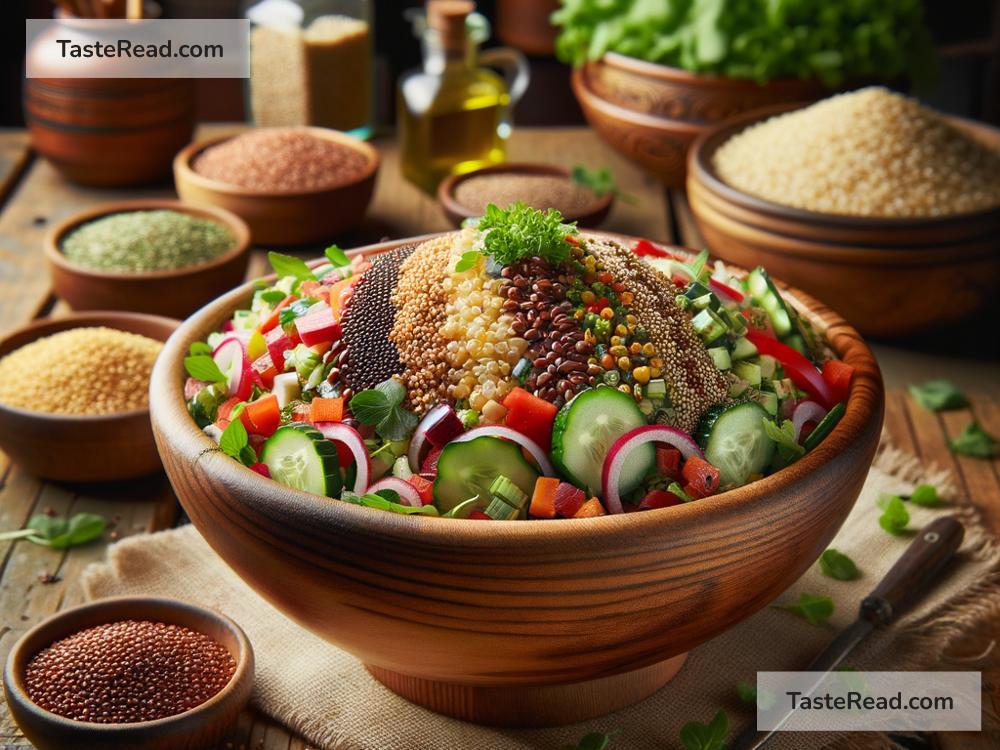Exploring Ancient Grains in Modern Cooking: My Culinary Trials
Have you ever felt bored with the same old rice and wheat dishes? Well, that was me until I decided to dive into the world of ancient grains. This culinary adventure not only opened my eyes but also my palate, to the rich and nutritious options out there. So, let me share my journey of exploring ancient grains in modern cooking and how these trials turned into a delightful learning experience.
What are Ancient Grains?
Before we delve into my kitchen experiments, let’s talk a bit about what ancient grains are. Unlike our typical grains, ancient grains are those that have been around for thousands of years and have remained mostly unchanged over time. Think quinoa, amaranth, farro, and teff, to name a few. These grains were staple foods of our ancestors and, thanks to their nutritional benefits and versatility, they’re making a big comeback in contemporary kitchens.
The Beginning of My Culinary Adventure
My journey began with quinoa, a grain I had heard of but never really tried cooking. One of the reasons it caught my attention was its high protein content and the fact that it is gluten-free, making it a great option for those with gluten sensitivities. The first dish I tried was a simple quinoa salad with chopped vegetables and a lemon vinaigrette. The outcome? Absolutely delicious! The quinoa had a lovely, slightly nutty flavor that paired wonderfully with the freshness of the vegetables.
Encouraged by my first success, I moved on to farro. This ancient wheat grain has a chewy texture and a rich, nutty flavor. I decided to use it in a soup, replacing the usual barley with farro. The result was a hearty and comforting dish that instantly became a favorite in my household. Farro’s resilience in texture added a pleasant bite to the soup that barley couldn’t quite match.
Experimenting with Exotic Flavors
After getting comfortable with quinoa and farro, I wanted to push the boundaries further. Enter millet and teff, grains I knew little about but was eager to explore. Millet turned out to be incredibly versatile. I used it to make a creamy porridge for breakfast, which was a hit. Its mild flavor made it a perfect canvas for a range of toppings – from fresh fruits to nuts and honey.
Teff, a tiny grain that hails from Ethiopia, was next on my list. Famous for its use in making injera (a sourdough-risen flatbread), I was initially intimidated but decided to try making a simplified version of injera at home. While my first attempt wasn’t perfect, the slightly tangy flavor of the teff flour added an authentic touch to my homemade Ethiopian meal. It was a reminder that cooking is as much about the journey as it is about the destination.
Embracing the Ancient Grains Lifestyle
What started as a culinary experiment turned into a lifestyle change for me. Incorporating ancient grains into my diet introduced me to a range of flavors and textures I hadn’t experienced before. But more than that, it made me more conscious of what I was eating. These grains are not just about variety; they’re packed with nutrition – rich in fiber, protein, and essential vitamins and minerals.
Additionally, experimenting with ancient grains has made my cooking more inclusive. With friends and family members who have dietary restrictions, such as avoiding gluten or seeking more plant-based proteins, these grains have been a fantastic way to accommodate everyone’s needs without compromising on taste or variety.
My Key Takeaways
If I were to encapsulate my culinary trials with ancient grains into a few key takeaways, they would be:
- Don’t Be Afraid to Try Something New: Overcoming the initial hesitation can lead to delicious discoveries.
- Experiment with Confidence: Not every dish will be perfect on the first try, and that’s okay. It’s all part of the learning process.
- Ancient Grains are Incredibly Versatile: From breakfast porridges to hearty soups and salads, these grains can do it all.
- Health and Taste Can Go Hand in Hand: These grains prove that nutritious food can also be flavorful and satisfying.
In conclusion, exploring ancient grains has been a delightful and enriching experience. It’s a journey I’d recommend to anyone looking to diversify their diet, explore new flavors, or simply bring a bit of the ancient culinary world into the modern kitchen. Happy cooking!


